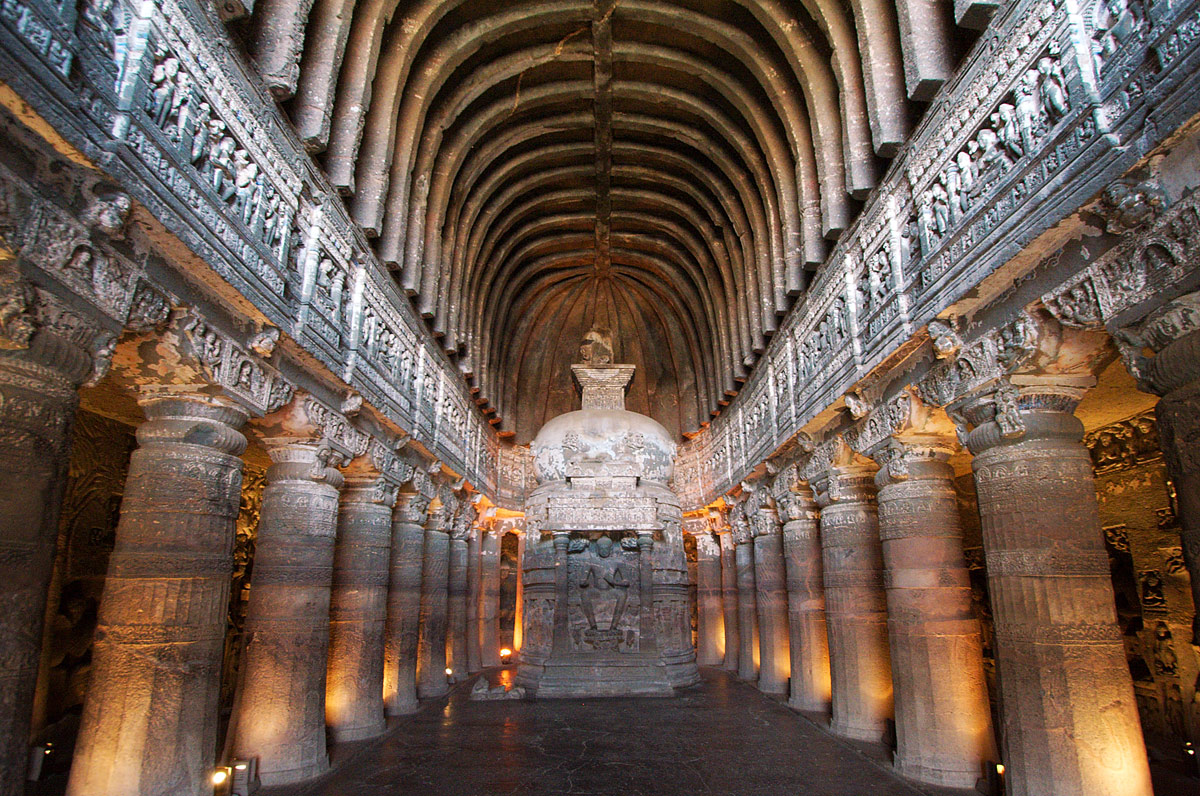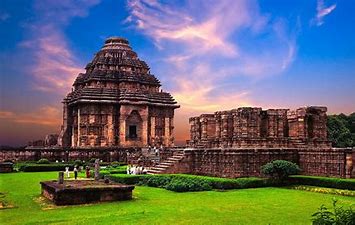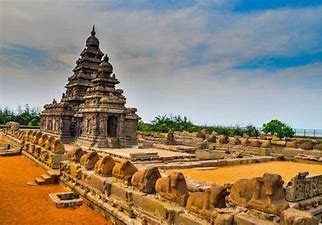Heritage Sites
A World Heritage Site is a landmark or area with legal protection by an international convention administered by the United Nations Educational, Scientific and Cultural Organization (UNESCO). World Heritage Sites are designated by UNESCO for having cultural, historical, scientific or other form of significance. The sites are judged to contain "cultural and natural heritage around the world considered to be of outstanding value to humanity".[2]
To be selected, a World Heritage Site must be a somehow unique landmark which is geographically and historically identifiable and has special cultural or physical significance. For example, World Heritage Sites might be ancient ruins or historical structures, buildings, cities,[a] deserts, forests, islands, lakes, monuments, mountains, or wilderness areas.[5][6] A World Heritage Site may signify a remarkable accomplishment of humanity, and serve as evidence of our intellectual history on the planet, or it might be a place of great natural beauty.[7] As of July 2021, a total of 1,154 World Heritage Sites (897 cultural, 218 natural, and 39 mixed properties) exist across 167 countries. With 58 selected areas, Italy is the country with the most sites on the list.[8]
The sites are intended for practical conservation for posterity, which otherwise would be subject to risk from human or animal trespassing, unmonitored, uncontrolled or unrestricted access, or threat from local administrative negligence. Sites are demarcated by UNESCO as protected zones.[2] The World Heritage Sites list is maintained by the international World Heritage Program administered by the UNESCO World Heritage Committee, composed of 21 "states parties" that are elected by their General Assembly.[9] The programme catalogues, names, and conserves sites of outstanding cultural or natural importance to the common culture and heritage of humanity. The programme began with the "Convention Concerning the Protection of the World's Cultural and Natural Heritage",[10] which was adopted by the General Conference of UNESCO on 16 November 1972. Since then, 193 state parties have ratified the convention, making it one of the most widely recognised international agreements and the world's most popular cultural programme.[11]
| Name | Image | Description |
|---|
| Ajanta Caves |  | The Ajanta Caves are approximately 30 rock-cut Buddhist cave monuments dating from the 2nd century BCE to about 480 CE in the Aurangabad district of Maharashtra state in India.[1][note 1] The caves include paintings and rock-cut sculptures described as among the finest surviving examples of ancient Indian art, particularly expressive paintings that present emotions through gesture, pose and form.[3][4][5]
They are universally regarded as masterpieces of Buddhist religious art. The caves were built in two phases, the first starting around the 2nd century BCE and the second occurring from 400 to 650 CE, according to older accounts, or in a brief period of 460–480 CE according to later scholarship.[6] The site is a protected monument in the care of the Archaeological Survey of India,[7] and since 1983, the Ajanta Caves have been a UNESCO World Heritage Site.
The Ajanta Caves constitute ancient monasteries and worship-halls of different Buddhist traditions carved into a 75-metre (246 ft) wall of rock.[8][9] The caves also present paintings depicting the past lives [10] and rebirths of the Buddha, pictorial tales from Aryasura's Jatakamala, and rock-cut sculptures of Buddhist deities.[8][11][12] Textual records suggest that these caves served as a monsoon retreat for monks, as well as a resting site for merchants and pilgrims in ancient India.[8] While vivid colours and mural wall-painting were abundant in Indian history as evidenced by historical records, Caves 16, 17, 1 and 2 of Ajanta form the largest corpus of surviving ancient Indian wall-painting.[13] |
| Ellora Caves |  | Ellora (\e-ˈlȯr-ə\, IAST: Vērūḷ) is a UNESCO World Heritage Site located in the Aurangabad district of Maharashtra, India. It is one of the largest rock-cut Hindu temple cave complexes in the world, featuring Buddhist and Jain monuments with artwork dating from the period 600–1000 CE.[1][2] Cave 16 features the largest single monolithic rock excavation in the world, the Kailash temple, a chariot-shaped monument dedicated to Lord Shiva. The Kailash temple excavation also features sculptures depicting the gods, goddesses found in Hinduism as well as relief panels summarizing the two major Hindu Epics.[3][4][5]
There are over 100 caves at the site, all excavated from the basalt cliffs in the Charanandri Hills, 34 of which are open to public.[3] These consist of 17 Hindu (caves 13–29), 12 Buddhist (caves 1–12) and 5 Jain (caves 30–34) caves,[6][7] each group representing deities and mythologies prevalent in the 1st millennium CE, as well as monasteries of each respective religion.[6] They were built close to one another and illustrate the religious harmony that existed in ancient India.[2][8] All of the Ellora monuments were built during the Rashtrakuta dynasty, which constructed part of the Hindu and Buddhist caves, and the Yadava dynasty, which constructed a number of the Jain caves. Funding for the construction of the monuments was provided by royals, traders and the wealthy of the region. |
| Taj Mahal |  | The Taj Mahal (/ˌtɑːdʒ məˈhɑːl, ˌtɑːʒ-/;[4] lit. 'Crown of the Palace', [taːdʒ ˈmɛːɦ(ə)l]),[5] is an ivory-white marble mausoleum on the right bank of the river Yamuna in the Indian city of Agra. It was commissioned in 1632 by the Mughal emperor Shah Jahan (r. 1628–1658) to house the tomb of his favourite wife, Mumtaz Mahal; it also houses the tomb of Shah Jahan himself. The tomb is the centrepiece of a 17-hectare (42-acre) complex, which includes a mosque and a guest house, and is set in formal gardens bounded on three sides by a crenellated wall.
Construction of the mausoleum was essentially completed in 1643, but work continued on other phases of the project for another 10 years. The Taj Mahal complex is believed to have been completed in its entirety in 1653 at a cost estimated at the time to be around ₹32 million, which in 2020 would be approximately ₹70 billion (about U.S. $1 billion). The construction project employed some 20,000 artisans under the guidance of a board of architects led by the court architect to the emperor, Ustad Ahmad Lahauri. |
| Konark Sun Temple |  | Konark Sun Temple is a 13th-century CE (year 1250) Sun temple at Konark about 35 kilometres (22 mi) northeast from Puri on the coastline of Odisha, India.[1][2] The temple is attributed to king Narasimhadeva I of the Eastern Ganga dynasty about 1250 CE.[3][4]
Dedicated to the Hindu Sun God Surya, what remains of the temple complex has the appearance of a 100-foot (30 m) high chariot with immense wheels and horses, all carved from stone. Once over 200 feet (61 m) high,[1][5] much of the temple is now in ruins, in particular the large shikara tower over the sanctuary; at one time this rose much higher than the mandapa that remains. The structures and elements that have survived are famed for their intricate artwork, iconography, and themes, including erotic kama and mithuna scenes. Also called the Surya Devalaya, it is a classic illustration of the Odisha style of Architecture or Kalinga architecture |
| Group of Monuments Mahabalipuram |  | Mamallapuram, also known as Mahabalipuram, is a town in Chengalpattu district in the southeastern Indian state of Tamil Nadu, best known for the UNESCO World Heritage Site of 7th- and 8th-century Hindu Group of Monuments at Mahabalipuram. It is one of the famous tourist sites in India.[1] The ancient name of the place is Thirukadalmallai
Mamallapuram, also known as Mahabalipuram, is a town in Chengalpattu district in the southeastern Indian state of Tamil Nadu, best known for the UNESCO World Heritage Site of 7th- and 8th-century Hindu Group of Monuments at Mahabalipuram. It is one of the famous tourist sites in India. The ancient name of the place is Thirukadalmallai |




